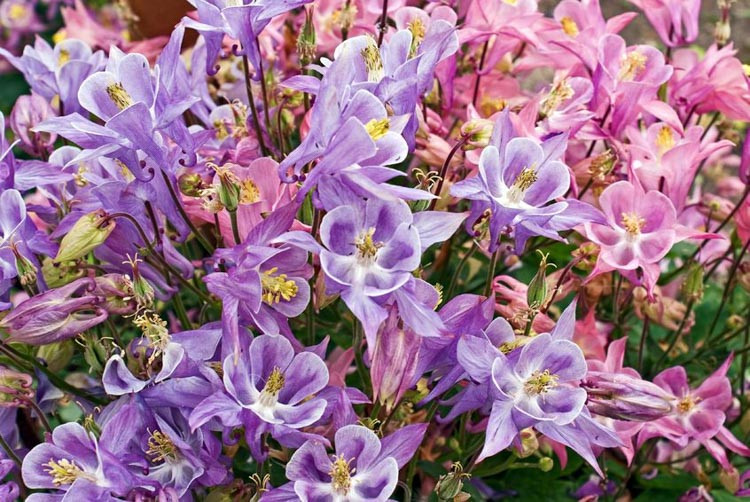Aquilegia (Columbine)
Aquilegia, commonly known as columbine, is a genus of perennial flowering plants in the Ranunculaceae family. With over 60 species and numerous cultivars, these charming plants are known for their unique, spurred flowers and delicate, fern-like foliage. Native to various regions, including North America, Europe, and Asia, columbines can be found in meadows, woodlands, and higher altitudes.
Flowers: The flowers of Aquilegia plants are the main attraction, exhibiting a wide range of colors such as blue, purple, red, pink, yellow, and white. The distinctive, nodding blooms often have contrasting colors in the petals and spurs, adding a touch of whimsy to any garden. Columbines typically bloom in late spring to early summer, providing a delightful splash of color after spring bulbs have faded.
Culture: Columbine plants are relatively hardy and can thrive in USDA hardiness zones 3-9, depending on the species and cultivar. They prefer well-draining soil with a slightly acidic to neutral pH (6.0-7.0) and grow best in full sun to partial shade. In hotter climates, some afternoon shade is recommended to protect the plants from excessive heat.
Pollinators: These nectar-rich flowers are a magnet for pollinators such as hummingbirds, bees, and butterflies, which are attracted to the tubular shape and vibrant colors. By planting columbines, you can support these beneficial creatures and add life to your garden.
Landscape uses: Aquilegia are versatile plants, suitable for various garden styles and uses. They can be incorporated into cottage gardens, woodland gardens, mixed borders, rock gardens, and even containers. Their graceful appearance, combined with their relatively low-maintenance nature, makes them a popular choice among gardeners.
Deer/rabbit: One of the advantages of growing columbines is their resistance to deer and rabbits. Although not entirely immune to browsing, these plants are less likely to be targeted by these animals, especially when other preferred food sources are available.

